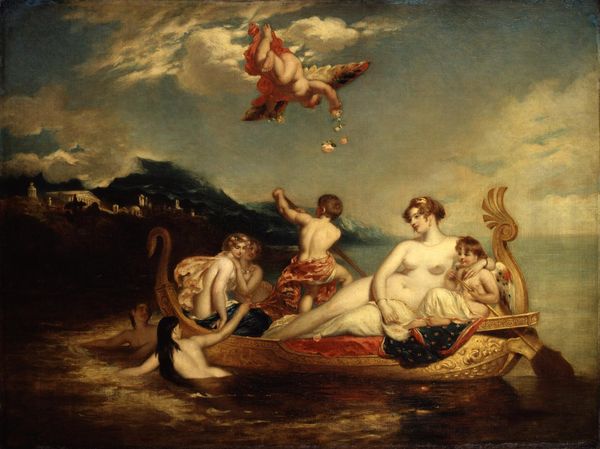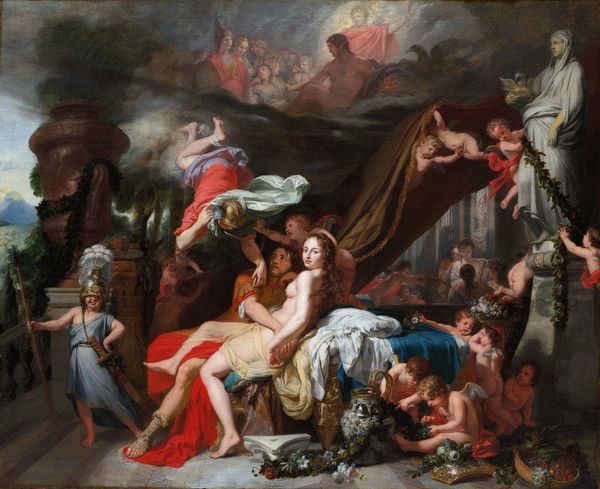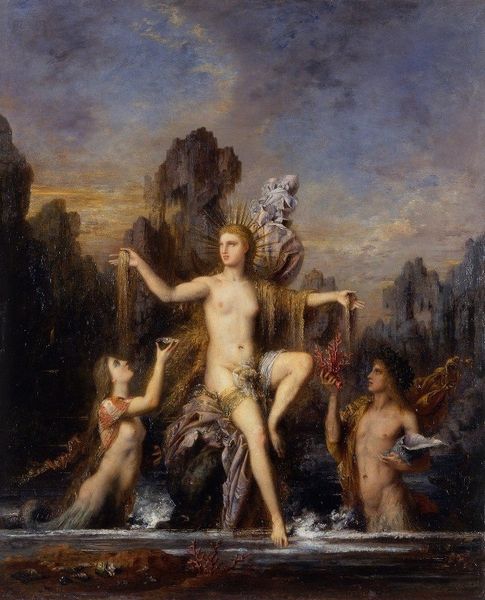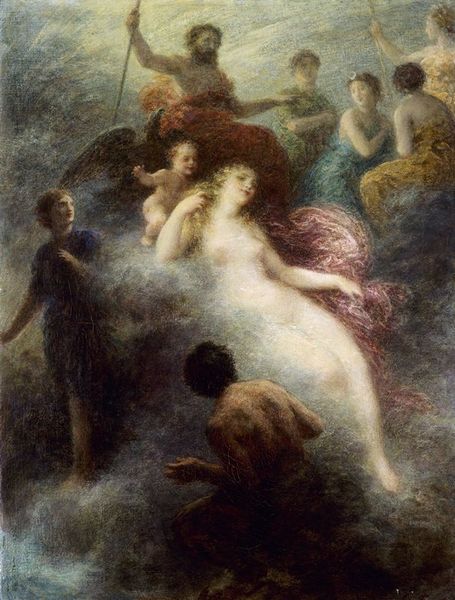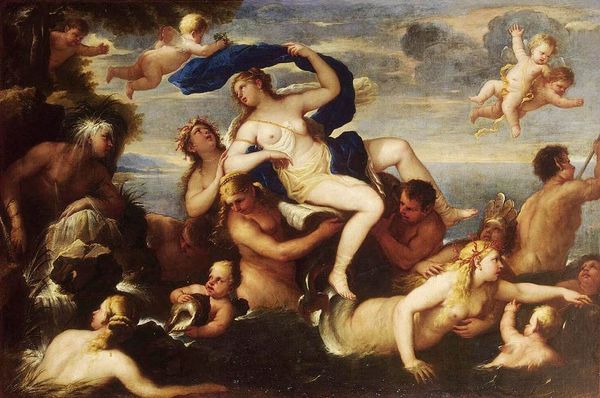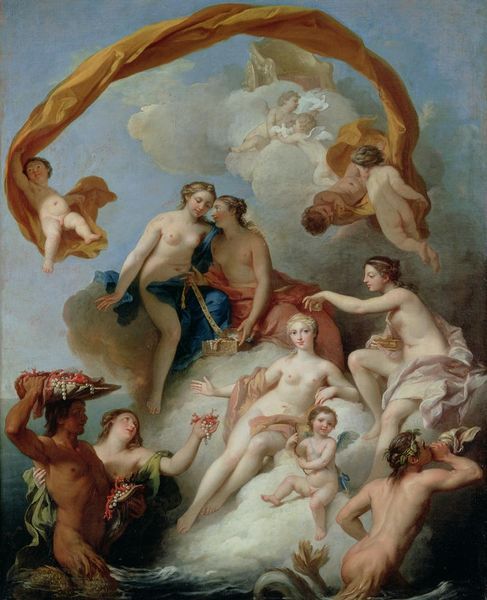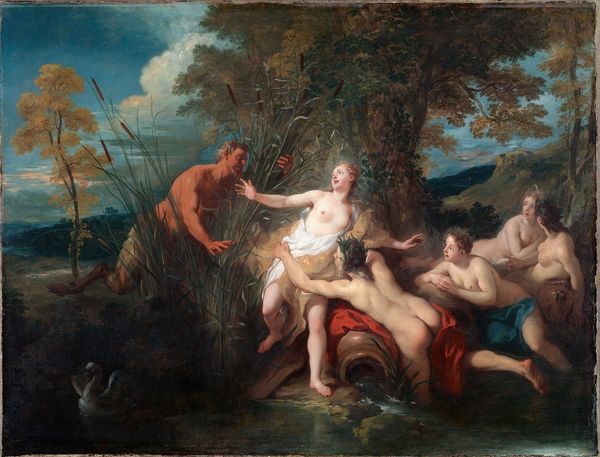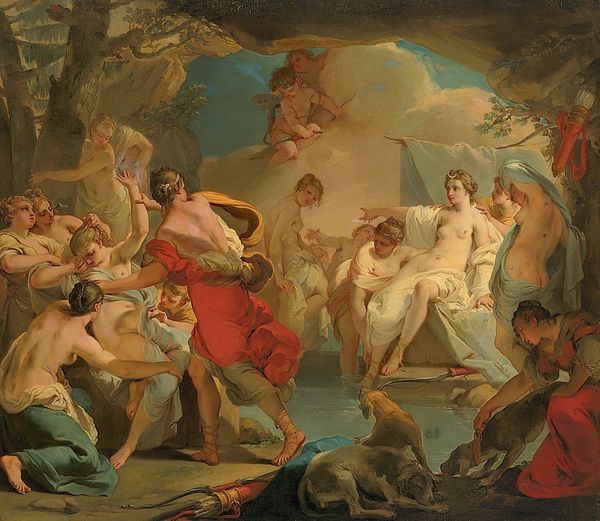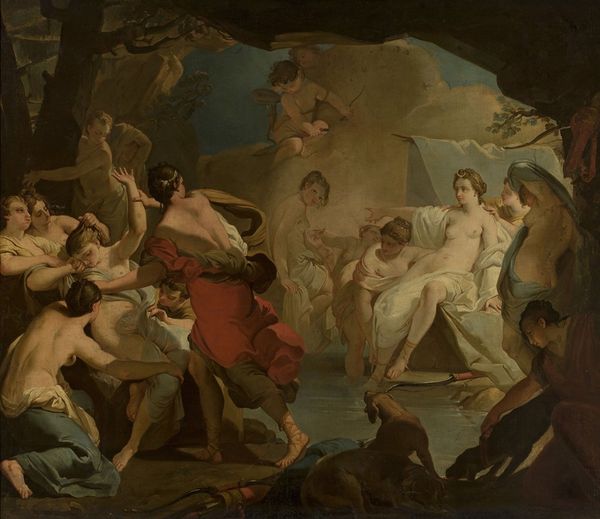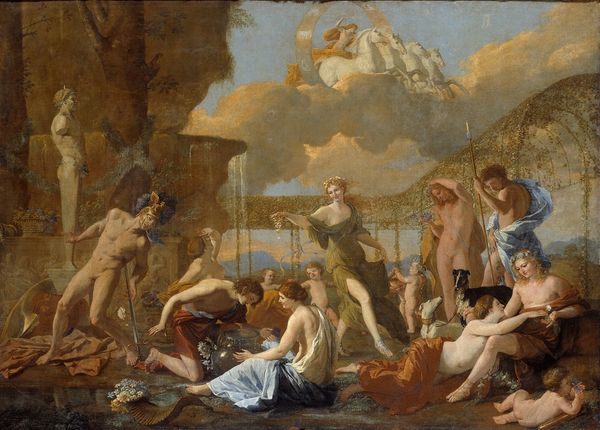
Dimensions: support: 1587 x 1175 mm
Copyright: CC-BY-NC-ND 4.0 DEED, Photo: Tate
Editor: This is William Etty's "Youth on the Prow, and Pleasure at the Helm," housed at the Tate. It seems to explore themes of hedonism, rendered in oil on a grand scale. What stands out to you about the materials and the process Etty might have used? Curator: Well, let's consider the societal context. Etty was working within a system that valued the classical and the academic. Yet, he was also deeply engaged with the materiality of paint itself, almost challenging the traditional hierarchy separating craft from "high art." What does the sheer size of the canvas suggest to you about the intended audience and display of this work? Editor: It makes me think about how art was consumed and who had access to it. Curator: Exactly. The canvas and the labor involved speak volumes about patronage and the economics of art production in Etty's time. Understanding that helps us unpack the layers of meaning beyond the surface. Editor: That shifts my understanding completely.
Comments
tate 6 months ago
⋮
http://www.tate.org.uk/art/artworks/etty-youth-on-the-prow-and-pleasure-at-the-helm-n00356
Join the conversation
Join millions of artists and users on Artera today and experience the ultimate creative platform.
tate 6 months ago
⋮
Thomas Gray’s poem The Bard, published in 1757, fascinated many of the Romantic generation. Etty’s picture illustrates the linesIn gallant trim, the gilded vessel goes,Youth on the Prow, and Pleasure at the Helm,Unmindful of the sweeping whirlwind’s sway.Etty was renowned for his sensual depiction of the nude. He shows youth snatching at the ‘bubbles of pleasure’ until woken from its indulgence by ‘the whirlwind of distress’. He described the work as an ‘allegory of human life’. Gallery label, May 2007
